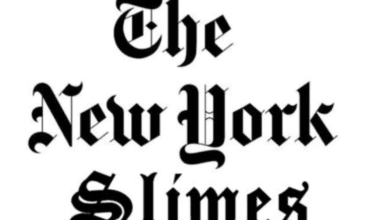Home Sellers Retreat From the Market, Increasing Shortages and Buoying Home Prices
- Collateral Analytics data from Black Knight showed January marking the fourth consecutive month of declines in for-sale inventory on a seasonally adjusted basis after seeing strong improvement in shortages early last year
- Months of supply has stagnated at approximately 3.1 in recent months as falling demand has been met with a weakening inflow of new listings, with 90% of U.S. markets facing growing inventory shortages
- Though January marked the seventh consecutive month of falling home prices, the month’s decline (-0.24% from December; -0.13% on a seasonally adjusted basis) was the smallest yet in that time span
- Growing supply shortages are holding home prices higher than they otherwise would be given current affordability constraints, as elevated rates continue to lock would-be sellers in place
- Half of all mortgaged homes have first-lien interest rates at or below 3.5%, a full 3 percentage points below today’s market rate, while two-thirds are at 4% or lower
- Tight affordability continued to dampen demand, as home sales fell to a more than 7-year low in January on a seasonally adjusted basis
- Buyside activity had perked up when 30-year rates fell to near 6% in early February, but recent data has shown just how sensitive that demand is to rate movements
- Sharply rising 30-year rates in February have weakened home affordability, with nearly all major U.S. markets remaining unaffordable as compared to their own long-run averages
Today, a new report was released based on industry-leading mortgage, real estate and public records datasets. With both supply and demand in the housing market being impacted by a volatile interest rate environment, this month’s Black Knight, Inc. (NYSE:BKI) report looks at the continuing – and worsening – shortage in for-sale inventory and the role it is playing in keeping affordability tight and buoying home prices. As Black Knight Vice President of Enterprise Research Andy Walden explains, growing supply shortages are holding home prices higher than they otherwise would be given current affordability constraints, as elevated rates continue to lock would-be sellers in place.
“The interplay between inventory, home prices and interest rates has been the defining characteristic of the housing market for the last two years, and this continues to be the case,” said Walden. “Today, we see buyer demand dampened under pressure from rising rates and their impact on affordability, with purchase rate-lock volumes cooling in late February. However, when rates ticked down closer to 6% early in the month, we saw a rebound of buyside demand. On the other side of the equation, we’ve seen a consistent theme of potential sellers – many with first-lien rates a full 3 percentage points below today’s offerings – pulling back from putting their homes on the market. In fact, January marked the fourth consecutive monthly decline in overall for-sale inventory according to our Collateral Analytics data, with the primary driver being a 25-month stretch of new listing volumes running below pre-pandemic averages. While demand remains weak, faltering supply has resulted in months of available inventory stagnating near 3.1 in recent months.
“Sharply rising 30-year rates in February have weakened home affordability, with nearly all major U.S. markets remaining unaffordable as compared to their own long-run averages. With 30-year rates at 6.5% in late February, it took 33.2% of the median household income to make the monthly principal and interest payments on the average home purchase. That’s up from January’s 32.4% and significantly above the 30-year average of ~24%, but still 3.5 percentage points below the 37% level reached in October 2022 when affordability hit a more than 35-year low. Between escalating inventory challenges and worsening affordability, we’re seeing some volatility in the market – just not in the form of widespread, steep price corrections.”
This month’s report draws further upon the Black Knight HPI – the timeliest and most granular in the industry – to look at January 2023 home price trends, finding that prices fell once again, pulling back by 0.24% from December 2022 and a more modest 0.13% on a seasonally adjusted basis. Though January marked the seventh consecutive month of falling home prices, the month’s decline was the smallest during that span. Home prices are now -5.5% off their June peak (or off -2.9% seasonally adjusted).
The annual home price growth rate – which tracks growth over the prior 12 months – fell to 3.4% in January. That is already more than a full percentage point below the 30-year average – and is on pace to fall below 0% by March/April. Price impacts could strengthen again if 30-year rates continue to climb as they have through late February, although tight inventory will put a floor on how much prices will ease.




